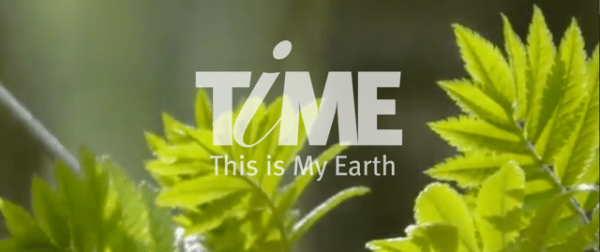On June 12th, the International Union for Conservation of Nature released its most recent inventory about mammal populations. The news was mixed: it is encouraging that a few predator species appear to be rebounding in the U.S. and Europe. But the numbers in Africa remain profoundly discouraging. There are now “77,340 assessed species” on the IUCN Red List; 22,784 are “threatened with extinction”. In 85% of the cases, habitat loss remains the driver behind this astonishing obliteration.
This comes right after the recent confirmation by Gerardo Ceballos, Paul R. Ehrlich and their colleagues in Science Advances confirming that the “Sixth Extinction” that we seem to be witnessing is not just intuition, but supported by empirical analysis. Rather than merely improve the precision of the body count isn’t there something that we can do?
Well actually –yes there is. This month a team of ecologists and activists launched a new initiative: “This Is My Earth” (TIME). TIME utilizes the insights and technologies of crowdfunding/kickstart internet outreach to galvanize global support and resources for purchasing lands for set aside conservation areas. The project is the brainchild of ecologist Uri Shanas, presently at Portland State University and although at a very pilot stage, it is promising.
Of course there are several other, well-established land conservancy programs which do critical work and have saved many important natural treasures. What makes “TIME” different is its emphasis on participation. TIME (This-Is-My-Earth) emphasizes enabling citizens anywhere in the world to get involved and collectively purchase small shares of biodiversity hotspot lands for conservation, and reduce habitat destruction.
It is easy to see for yourself how it might work by logging onto the rather fetching, pilot web-site. Through the organization’s Web interface, any individual can become a member and gain voting rights by paying an annual membership fee as low as €1. The organization is managed by volunteers in local chapters and by a global professional committee. The scientific committee will prioritize purchasable hotspot lands that would belong solely to the local organizations. The actual places purchased for protection will be selected by the global membership voting.
The truth is that habitat destruction has been going on for so long that many people simply become complacent or have given up hope. But future generations will judge us harshly for not trying to do more to leave them a fraction of the natural treasures that we inherited. The truth is that even with all the international diversity and disagreements, there is probably no single common impulse where a greater consensus exists among humans of all persuasions than the need to conserve nature and preserve biodiversity for the future.
There are 1 billion cellphones today in China alone. By the end of 2015, it is estimated that there will be over 4.1 billion email accounts operating worldwide. If 2 billion people have gone online to watch the Gangnam Style video by Korean rapper, surely we can find a way to make habitat preservation go viral as well. “This is My Earth” offers a fighting chance to bring people together on an egalitarian basis, to do something tangible to save their common planet. It’s great that the MAHB is doing its part to give this new, fledgling start-up (hardly 10 days old now) that chance. Click here and lend a hand!
Connect with This Is My Earth through its MAHB Node: This Is My Earth (TIME).
Dr. Alon Tal is a professor of environmental policy at the Ben Gurion University with past appointments at Harvard, Stanford and Otago universities. For the past decade he has chaired the international conference in Drylands and Desertification in conjunction with the United Nations and Sede Boqer Campus.
MAHB-UTS Blogs are a joint venture between the University of Technology Sydney and the Millennium Alliance for Humanity and the Biosphere. Questions should be directed to joan@mahbonline.org
The views and opinions expressed through the MAHB Website are those of the contributing authors and do not necessarily reflect an official position of the MAHB. The MAHB aims to share a range of perspectives and welcomes the discussions that they prompt.
